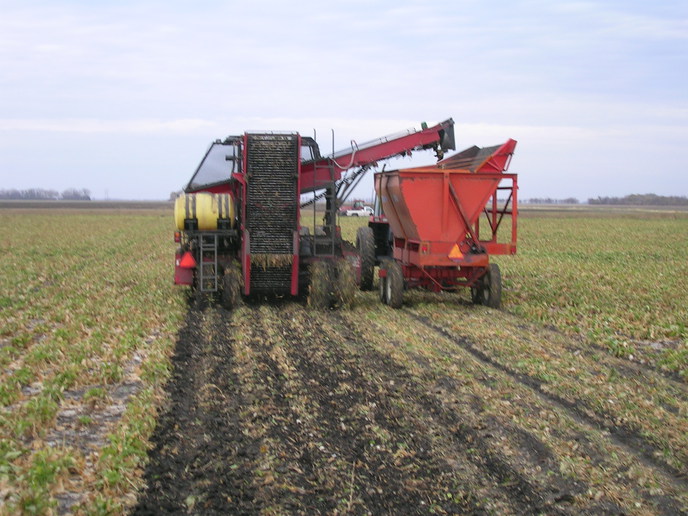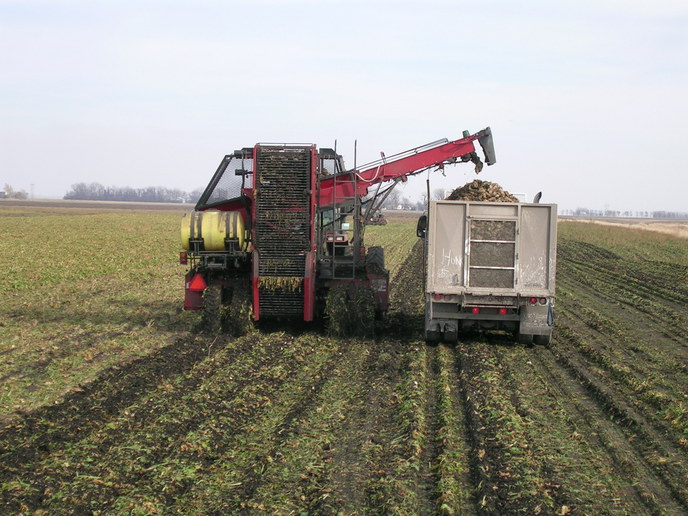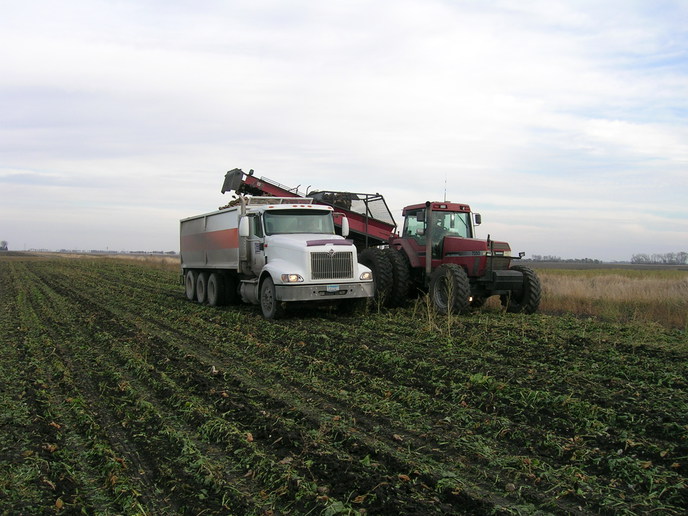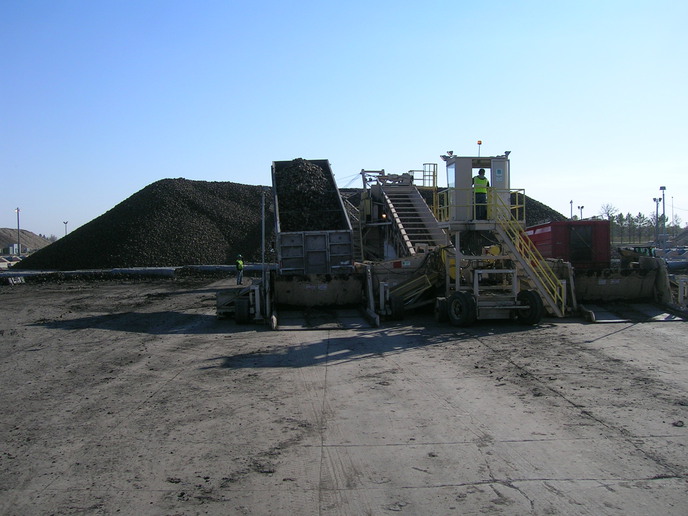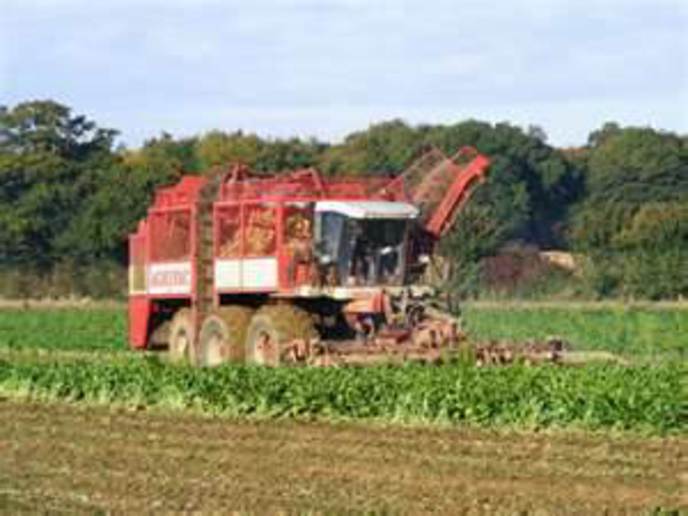Russ from MN
Well-known Member
- Location
- Bemidji MN
This October I drove truck for a farmer in the Red River valley, hauling sugar beets, and I thought I would post some pictures.
The first picture is opening a field using a cart, all the tires run between the rows, so no beets are driven on. The tops were previously removed with a rotobeater.
After the field is opened, then the trucks drove under the harvester, it would take about 10-20 minutes to fill a truck with about 38,000 lb.
The weeds behind this tractor are the edge of the field, some CRP on a hillside.
We unloaded at the plant into a piler, the dirt that shook out of the beets was put back in your truck and you take it back to the field and dump it.
If the harvest goes perfect 900 acres should take 10 days, this year it took 29! Too warm, too muddy, too cold, ever changing weather.
